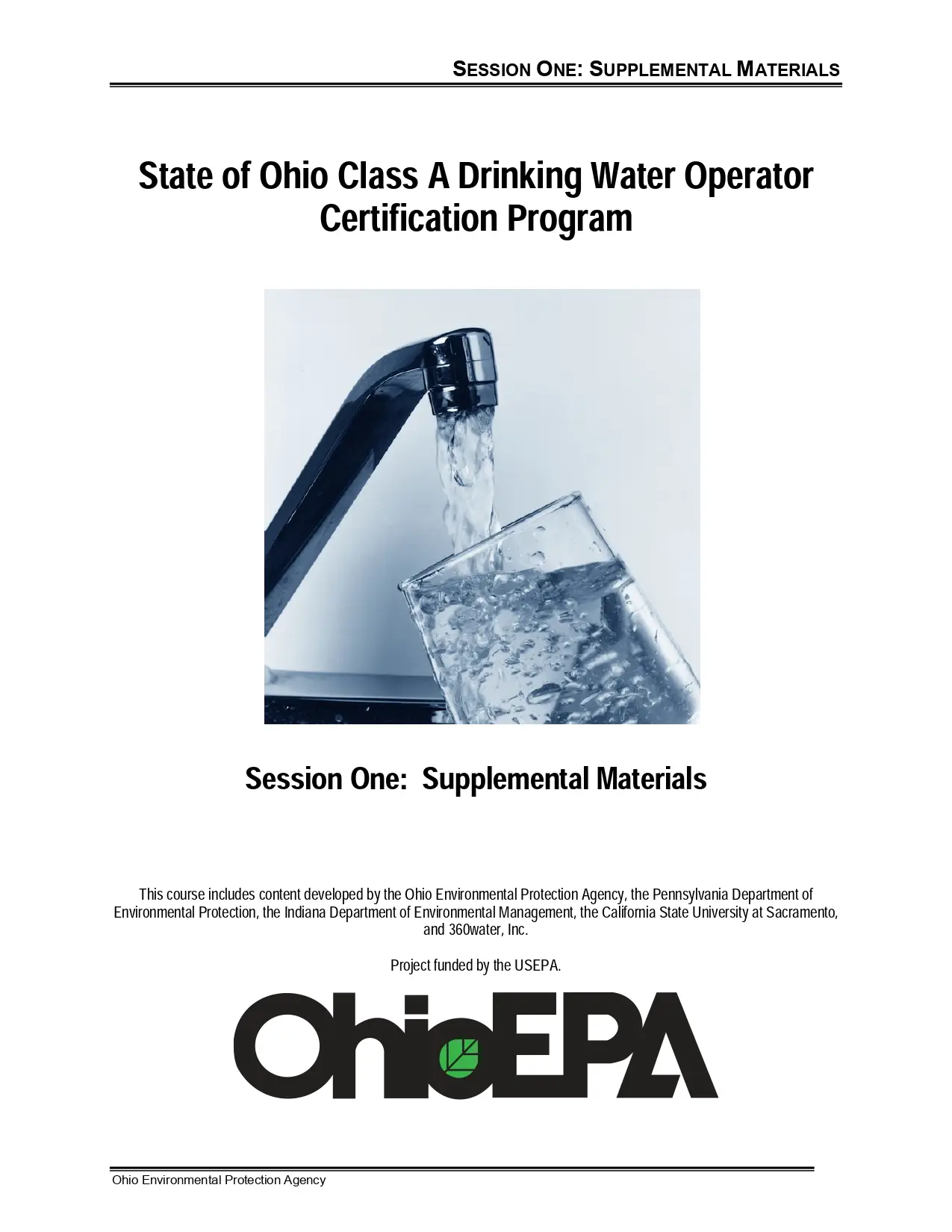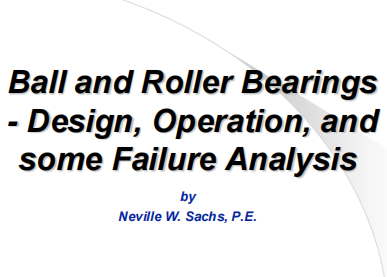Operation & Maintenance
Session One: Supplemental Materials
Views : 6
Usually dispatched in 2 to 3 days
Usually dispatched in 2 to 3 days
Category:
Operation & Maintenance
Only logged in customers who have purchased this product may leave a review.
Related books
Design Of Advanced Reverse Osmosis And Nanofiltration Membranes For Water Purification
ABSTRACT:
Most commercially available reverse osmosis (RO) and nanofiltration (NF) membranes are based on the thin film composite (TFC) aromatic polyamide membranes. However, they have several disadvantages including low resistance to fouling, low chemical and thermal stabilities and limited chlorine tolerance. To address these problems, advanced RO/NF membranes are being developed from polyimides for water and wastewater treatments. The following three projects have resulted from my research.
Design Of Advanced Reverse Osmosis And Nanofiltration Membranes For Water Purification
ABSTRACT:
Most commercially available reverse osmosis (RO) and nanofiltration (NF) membranes are based on the thin film composite (TFC) aromatic polyamide membranes. However, they have several disadvantages including low resistance to fouling, low chemical and thermal stabilities and limited chlorine tolerance. To address these problems, advanced RO/NF membranes are being developed from polyimides for water and wastewater treatments. The following three projects have resulted from my research.
Good Practice Guide to the Operation of Drinking Water Supply Systems for the Management of Microbial Risk
INTRODUCTION
Purpose of Good Practice Guide The catchment-to-consumer risk-based approach to the production of microbially-safe drinking water, which is detailed in the Framework for Management of Drinking Water Quality (the Framework) that underpins the Australian Drinking Water Guidelines (ADWG), is based on the identification and control of risks to the quality of drinking water supplied to consumers. This reduction in risk is achieved by implementing a multiple barrier approach, where a number of different barriers to contamination are put in place, from the catchment to the consumer. Whilst the risk management
process stretches all the way from catchment to consumer, in practice the majority of risks are managed through the use of various water treatment processes. Most Australian source waters require some level of treatment prior to being supplied to consumersas drinking water. The level of treatment required to produce microbially-safe drinking water will be a function of the quality of the source water and should be informed by a system-specific risk
assessment process that is consistent with the approach described under Element 2 (Assessment of the drinking water supply system) of the Framework.
The production of microbially-safe drinking water is difficult to consistently achieve, and requires constant vigilance, as well as well-maintained and operated water treatment processes (Element 3 (Preventive measures for drinking water quality management) and Element 4 (Operational procedures
and process control) of the Framework). Within this risk-based approach, the purpose of this Guide is to provide concise advice on good practice preventive measures for the management of drinking water treatment processes and the distribution of this treated water to consumers. This is achieved by providing targets, both numerical and observational, for the various activities that should be undertaken in order to produce microbiallysafe drinking water.
The Guide is not intended to be a risk assessment tool; it assumes that a system-specific risk assessment has been done, and that the treatment and distribution processes that are present are suitable for the assessed level of microbial risk. The Guide is therefore focused on the optimisation,
management and control of existing water supply systems. The advice in this Guide is applicable to existing water supply systems and is intended to help water utilities produce microbially-safe drinking water under existing arrangements; it will also assist utilities meet any future microbial health-based targets that may be includes in the ADWG. The Guide is presented in a tabular format for simplicity. The table is broken into sections that relate
to the key control points in typical water treatment and distribution systems.
Good Practice Guide to the Operation of Drinking Water Supply Systems for the Management of Microbial Risk
INTRODUCTION
Purpose of Good Practice Guide The catchment-to-consumer risk-based approach to the production of microbially-safe drinking water, which is detailed in the Framework for Management of Drinking Water Quality (the Framework) that underpins the Australian Drinking Water Guidelines (ADWG), is based on the identification and control of risks to the quality of drinking water supplied to consumers. This reduction in risk is achieved by implementing a multiple barrier approach, where a number of different barriers to contamination are put in place, from the catchment to the consumer. Whilst the risk management
process stretches all the way from catchment to consumer, in practice the majority of risks are managed through the use of various water treatment processes. Most Australian source waters require some level of treatment prior to being supplied to consumersas drinking water. The level of treatment required to produce microbially-safe drinking water will be a function of the quality of the source water and should be informed by a system-specific risk
assessment process that is consistent with the approach described under Element 2 (Assessment of the drinking water supply system) of the Framework.
The production of microbially-safe drinking water is difficult to consistently achieve, and requires constant vigilance, as well as well-maintained and operated water treatment processes (Element 3 (Preventive measures for drinking water quality management) and Element 4 (Operational procedures
and process control) of the Framework). Within this risk-based approach, the purpose of this Guide is to provide concise advice on good practice preventive measures for the management of drinking water treatment processes and the distribution of this treated water to consumers. This is achieved by providing targets, both numerical and observational, for the various activities that should be undertaken in order to produce microbiallysafe drinking water.
The Guide is not intended to be a risk assessment tool; it assumes that a system-specific risk assessment has been done, and that the treatment and distribution processes that are present are suitable for the assessed level of microbial risk. The Guide is therefore focused on the optimisation,
management and control of existing water supply systems. The advice in this Guide is applicable to existing water supply systems and is intended to help water utilities produce microbially-safe drinking water under existing arrangements; it will also assist utilities meet any future microbial health-based targets that may be includes in the ADWG. The Guide is presented in a tabular format for simplicity. The table is broken into sections that relate
to the key control points in typical water treatment and distribution systems.
Drinking Water Operator Certification Training Module #24 Gas Chlorination
Learning Objectives
. Explain the purpose of chlorination.
. Describe the two forms of chlorine.
. Describe the properties of liquid chlorine and gaseous chlorine.
. Explain how chlorine reacts in aqueous solutions.
. Read and explain chlorine reaction equations.
Drinking Water Operator Certification Training Module #24 Gas Chlorination
Learning Objectives
. Explain the purpose of chlorination.
. Describe the two forms of chlorine.
. Describe the properties of liquid chlorine and gaseous chlorine.
. Explain how chlorine reacts in aqueous solutions.
. Read and explain chlorine reaction equations.
Handbook-for-The-operation-of-Water-Treatment-Works
The term “water quality” describes the physical, chemical and microbiological characteristics of water. These properties collectively determine the overall water quality and the fitness of the water for a specific use. These properties are either intrinsic to the water or are the result of substances that are dissolved or suspended in the water. Water quality is only meaningful when evaluated in relation to the use of the water. The reason is that water of a certain quality may be fit for a specific use, but completely unfit for another use. For example, water that is fit for human consumption may not be fit as boiler feed water because the dissolved inorganic salts that are acceptable in drinking water, are not tolerated in boiler feed water, since they may precipitate and cause blockages in the boiler equipment. Water that is fit for domestic use (drinking water) must comply with specific requirements. The most important requirement is that it must be safe to drink.
Handbook-for-The-operation-of-Water-Treatment-Works
The term “water quality” describes the physical, chemical and microbiological characteristics of water. These properties collectively determine the overall water quality and the fitness of the water for a specific use. These properties are either intrinsic to the water or are the result of substances that are dissolved or suspended in the water. Water quality is only meaningful when evaluated in relation to the use of the water. The reason is that water of a certain quality may be fit for a specific use, but completely unfit for another use. For example, water that is fit for human consumption may not be fit as boiler feed water because the dissolved inorganic salts that are acceptable in drinking water, are not tolerated in boiler feed water, since they may precipitate and cause blockages in the boiler equipment. Water that is fit for domestic use (drinking water) must comply with specific requirements. The most important requirement is that it must be safe to drink.
Overview, Installation and Maintenance of Pumps, Valves and Piping
When you have completed this chapter, you will be able to do the following:
1. Recognize the principles of pump operation. 2. Identify the different types of pumps. 3. Identify an eductor.
4. Identify basic types and functions of valves. 5. Identify the types of steam traps. 6. Identify the different types of strainers.
7. Recognize the different types of filters. 8. Identify tubing and associated fittings. 9. Identify piping, associated fittings, and flange shielding.
10. Identify the types of packing and gasket material.
Overview, Installation and Maintenance of Pumps, Valves and Piping
When you have completed this chapter, you will be able to do the following:
1. Recognize the principles of pump operation. 2. Identify the different types of pumps. 3. Identify an eductor.
4. Identify basic types and functions of valves. 5. Identify the types of steam traps. 6. Identify the different types of strainers.
7. Recognize the different types of filters. 8. Identify tubing and associated fittings. 9. Identify piping, associated fittings, and flange shielding.
10. Identify the types of packing and gasket material.















Reviews
There are no reviews yet.